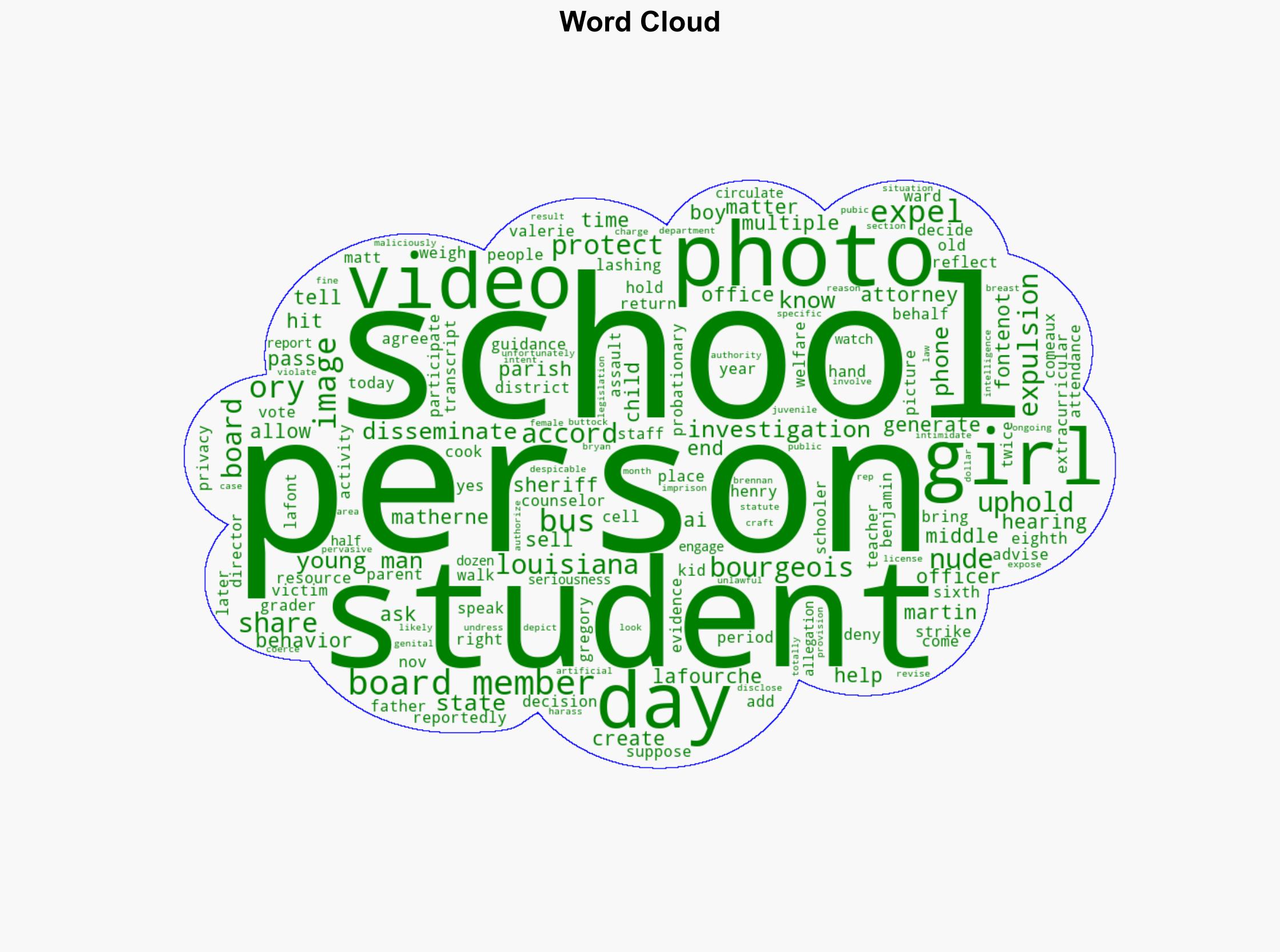Louisiana middle school student expelled for lashing out over AI-generated nude photos – Houma Courier
Published on: 2025-11-10
Intelligence Report: Louisiana middle school student expelled for lashing out over AI-generated nude photos – Houma Courier
1. BLUF (Bottom Line Up Front)
The most supported hypothesis is that the expulsion of the student was a reactionary measure to an immediate threat to student safety and privacy, with a moderate confidence level. The recommended action is to implement comprehensive digital literacy and cyber safety programs in schools to prevent similar incidents.
2. Competing Hypotheses
1. **Hypothesis A**: The expulsion was justified as a necessary disciplinary action to maintain school safety and address the immediate threat posed by the dissemination of AI-generated nude images.
2. **Hypothesis B**: The expulsion was an overreaction by the school board, influenced by public pressure and lacking a thorough understanding of the digital context and the student’s intent.
Using the Analysis of Competing Hypotheses (ACH) 2.0, Hypothesis A is better supported due to the school’s responsibility to ensure a safe environment and the ongoing investigation by law enforcement. Hypothesis B lacks support as it does not account for the broader implications of digital image dissemination.
3. Key Assumptions and Red Flags
– **Assumptions**: It is assumed that the expulsion will deter future incidents and that the school board’s decision was based on a comprehensive understanding of the situation.
– **Red Flags**: The lack of parental involvement in the initial stages of the investigation and the absence of clear policies on AI-generated content are concerning.
– **Blind Spots**: There is limited information on the school’s digital safety policies and the extent of AI-generated content awareness among students and staff.
4. Implications and Strategic Risks
The incident highlights a growing threat of AI misuse in schools, posing risks to student privacy and mental health. If not addressed, it could lead to increased psychological distress among students and potential legal liabilities for educational institutions. The situation may escalate if similar incidents occur without preventive measures.
5. Recommendations and Outlook
- Develop and implement digital literacy and cyber safety programs to educate students and staff on the risks of AI-generated content.
- Establish clear policies and protocols for handling digital content-related incidents.
- Scenario Projections:
- **Best Case**: Successful implementation of educational programs reduces incidents and enhances student safety.
- **Worst Case**: Continued incidents lead to widespread psychological harm and legal challenges.
- **Most Likely**: Gradual improvement in digital safety awareness with occasional incidents prompting policy reviews.
6. Key Individuals and Entities
– Matt Ory and Benjamin Comeaux (attorneys representing the student)
– Valerie Bourgeois and Henry Lafont (school board members)
– Gregory Cook (Director of Child Welfare and Attendance)
– Brennan Matherne (Public Officer, Lafourche Parish Sheriff’s Office)
– Bryan Fontenot (Louisiana State Representative)
7. Thematic Tags
cybersecurity, digital safety, education policy, AI ethics, student welfare





